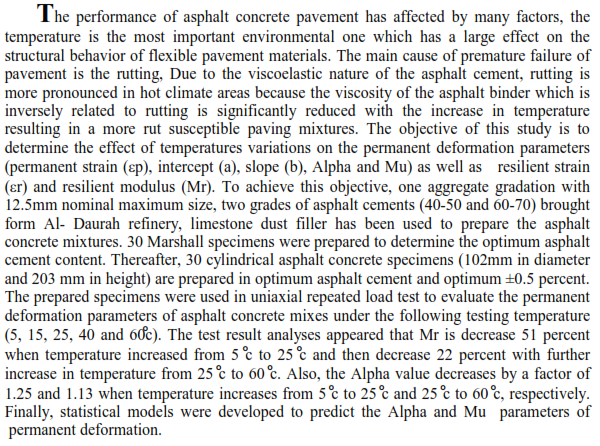


There are many images you need to large Khneh space With the continued evolution of storage technology for computers, there is a continuing need and are required to reduce Alkhoznip space Pictures Zguet pictures in a good way, the way conversion Alamueja to Purifiers
This paper proposes a self organizing fuzzy controller as an enhancement level of the fuzzy controller. The adjustment mechanism provides explicit adaptation to tune and update the position of the output membership functions of the fuzzy controller. Simulation results show that this controller is capable of controlling a non-linear time varying system so that the performance of the system improves so as to reach the desired state in a less number of samples.
The atomic properties have been studied for He-like ions (He atom, Li+, Be2+ and B3+ions). These properties included, the atomic form factor f(S), electron density at the nucleus , nuclear magnetic shielding constant and diamagnetic susceptibility ,which are very important in the study of physical properties of the atoms and ions. For these purpose two types of the wave functions applied are used, the Hartree-Fock (HF) waves function (uncorrelated) and the Configuration interaction (CI) wave function (correlated). All the results and the behaviors obtained in this work have been discussed, interpreted and compared with those previously obtained.
 (5)
(5)
A sensitive film was manufactured Holokravaa using plastic materials the a Akougl substantive Amaid with poly alcohol Funnell addition to sensitive material Daakromat ammonium were obtained registry Qakma to diffraction efficiency of 83%
In this article, we aim to define a universal set consisting of the subscripts of the fuzzy differential equation (5) except the two elements and , subsets of that universal set are defined according to certain conditions. Then, we use the constructed universal set with its subsets for suggesting an analytical method which facilitates solving fuzzy initial value problems of any order by using the strongly generalized H-differentiability. Also, valid sets with graphs for solutions of fuzzy initial value problems of higher orders are found.
 (1)
(1)
 (1)
(1)
 (7)
(7)
 (7)
(7)